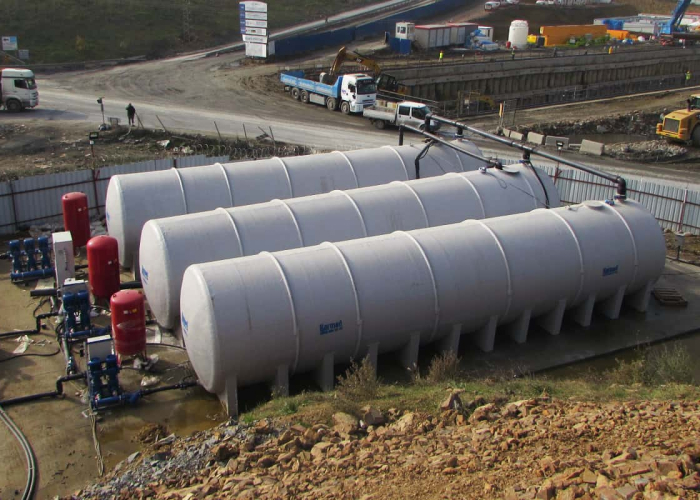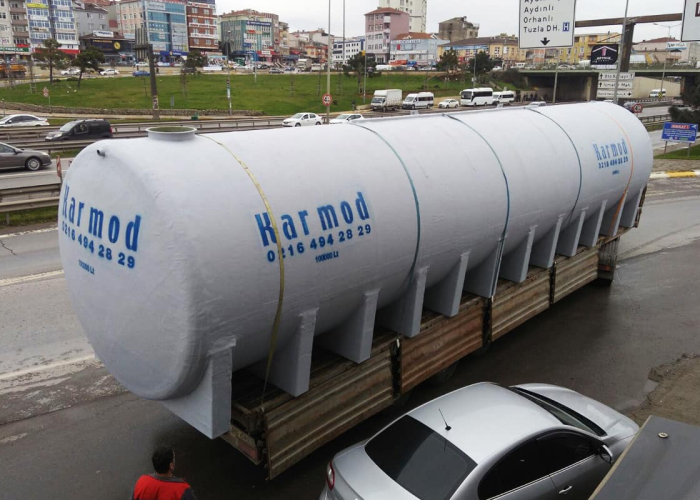Tanks are now being used in various fields, not only in Turkey but also in many countries around the world, serving multiple purposes. Whether it's models that can be used in our homes or tank models that have proven their success in industrial areas, tanks have become an essential tool. Tanks also find application as a precautionary measure during emergency situations. In some factories located outside of cities, it may be considered dangerous to transport water tank for security reasons or due to limited resources. In such cases, tanks are used with the primary purpose of storing chemicals or water for protection against fire, allowing for storage and subsequent discharge when needed.

For effective firefighting, it is essential to have the firefighting equipment connected to the tank. Otherwise, when a fire breaks out, the equipment will be activated, but it won't be able to deliver the required amount of water to extinguish the fire. Tanks have a significant role in such situations as they serve as a vital source of water for firefighters when they are unable to suppress the fire. Therefore, tanks are of utmost importance during fire emergencies and can potentially alter the course of the fire.
Which Tanks Are Most Resistant to Fire?
Tanks can be made of polyethylene, polyester, or stainless steel, with each material offering its unique advantages. When it comes to firefighting, the best tanks to use are those made of stainless steel. Due to its sturdy nature and ability to withstand temperatures up to 80 degrees Celsius, stainless steel is the preferred material for firefighting tanks. These tanks can be connected to the firefighting equipment through a manifold connection, allowing for the withdrawal of water from the tank to combat the fire when the sensors are triggered. Stainless steel tanks are manufactured by combining chromium and nickel to create stainless steel sheets, which are then joined using argon welding. Other components, such as the manifold and cover, are produced accordingly. Thanks to their resistance to rust and corrosion, stainless steel tanks can remain in a state of readiness for firefighting purposes for many years.

Other types of tanks can also be used during emergencies, but their effectiveness is limited to initial firefighting efforts. If a fire grows and reaches the tanks, they may become unusable. However, with proper positioning and installation, this issue can be mitigated.
Polyethylene tanks can be used during fires, but they are typically used in conjunction with multiple tanks due to their maximum capacity of up to 25,000 liters. Compared to other tanks, they are lightweight and suitable for storing food products as they meet food-grade standards. Additionally, thanks to the UV stabilization of polyethylene, these tanks can be located outdoors for emergency situations. The production of polyethylene tanks involves compressing the material into molds, resulting in a monoblock structure.
Polyester tanks, on the other hand, are made using polyester resin and fiberglass. Both stainless steel and polyester tanks can be installed on-site, allowing to produce large capacity tanks. Polyester tanks are known for their chemical resistance, making them suitable for storing chemical mixtures that can enhance firefighting effectiveness. This enables more efficient fire interventions during emergencies.
In this article, we have discussed the usage of tanks during fire emergencies, their fire resistance, and briefly highlighted their features. If you are interested in purchasing a tank for use during natural disasters such as fires, please feel free to contact our customer representatives.


 EN
EN
 DE
DE
 FR
FR
 IT
IT
 ES
ES
 PT
PT
 RU
RU
 AR
AR
 BG
BG
 SR
SR
 GR
GR
 SQ
SQ
 RO
RO
 PL
PL
 HU
HU
 CZ
CZ
 HR
HR
 AZ
AZ
 GE
GE
 AM
AM
 IL
IL